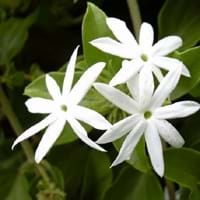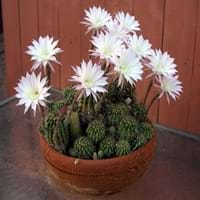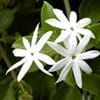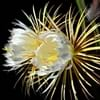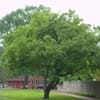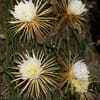Life Span
Perennial
Perennial
Type
Flowering Plants, Shrubs, Vines
Cactus or Succulent
Origin
Southern Africa
North America, South America, Brazil
Types
Arabian jasmine, Sambac jasmine, Gold Coast jasmine
Peanut cactus
Habitat
Forest edges, Hillside, Woods
Desert, Sandy areas, Semi desert
USDA Hardiness Zone
Not Available
12-15
AHS Heat Zone
12-10
12-10
Sunset Zone
8, 9, 13, 14, 15, 16, 17, 18, 19, 20, 21, 22, 23, 24
12, 13, 16, 17, 21, 22, 23, 24
Habit
Upright/Erect
Upright/Erect
Flower Color
Pale White, White
White, Yellow, Red, Purple, Orange, Rose
Flower Color Modifier
Not Available
Not Available
Fruit Color
Black, Brown
Green, Orange Red
Leaf Color in Spring
Gray Green
Not Available
Leaf Color in Summer
Gray Green
Not Available
Leaf Color in Fall
Gray Green
Not Available
Leaf Color in Winter
Gray Green
Not Available
Leaf Shape
Oblovate
Succulent
Plant Season
Spring, Summer, Fall, Winter
Not Available
Sunlight
Full Sun, Partial Sun
Full Sun, Partial Sun, Partial shade
Type of Soil
Loam, Sand
Loam, Sand
The pH of Soil
Acidic, Neutral, Alkaline
Acidic, Neutral, Alkaline
Soil Drainage
Well drained
Well drained
Bloom Time
Early Spring, Spring, Late Winter
Spring
Tolerances
Drought
Drought, Dry soil, Full Sun, Heat Tolerance, Rocky Soil
Where to Plant?
Container
Container, Ground, Pot
How to Plant?
Seedlings, Stem Planting
Grafting, Seedlings, Stem Planting
Plant Maintenance
Medium
Low
Watering Requirements
Do Not over Water, Requires regular watering
Average Water Needs, Do Not over Water, Never Over-water, Water once every two or three weeks, Water when top layer of soil becomes dry
In Summer
Lots of watering
Average Water
In Spring
Moderate
Average Water
In Winter
Average Water
Less Watering
Soil pH
Acidic, Neutral, Alkaline
Acidic, Neutral, Alkaline
Soil Type
Loam, Sand
Loam, Sand
Soil Drainage Capacity
Well drained
Well drained
Sun Exposure
Full Sun, Partial Sun
Full Sun, Partial Sun, Partial shade
Pruning
Proper mowing practices are necessary, Prune after flowering
Remove dead or diseased plant parts
Fertilizers
Compost, Fertilize the soil before planting, General garden fertilizer
fertilize in growing season, fertilize in summer, Potassium
Pests and Diseases
Caterpillars, Leaf curl, Mildew
Mealybugs, Scale
Plant Tolerance
Humidity, Salt and Soil Compaction, Shade areas
Drought, Dry soil, Full Sun, Heat Tolerance, Rocky Soil
Flower Petal Number
Single
Single
Foliage Texture
Bold
Bold
Foliage Sheen
Matte
Not Available
Attracts
Butterflies, Hummingbirds
Hummingbirds
Allergy
Chest tightness, Nausea, Vomiting
Skin cuts
Aesthetic Uses
Hanging Basket, small hedge
Beautification, Landscape Designing, Showy Purposes
Beauty Benefits
Good for the Scalp, Makes teeth white, Provides herbal hair care, Skin cleanser
No Beauty Benefits
Environmental Uses
Air purification, Indoor Air Purification, Insect Repellent
Air purification, Food for insects, Versatility, Very little waste
Medicinal Uses
Fever, Kidney problems, Urinary tract problems
Burns, Heals minor burns, Heart problems, High blood pressure, Wounds
Part of Plant Used
Flowers, Root
Leaves
Other Uses
Basketary, Cosmetics, Oil is used for aromatherapy, Oil is used in mosquito repellents, Oil is used in perfume, soaps, creams, etc., Used for fragrance
Decoration Purposes, Showy Purposes, Used as Ornamental plant, Used for its medicinal properties
Used As Indoor Plant
Yes
Yes
Used As Outdoor Plant
Yes
Yes
Garden Design
Container, Feature Plant, Foundation, Hedges, Mixed Border, Rock Garden, Wall, Tropical
Container, Houseplant, Rock Garden, Wall
Botanical Name
ALOE arborescens
ECHINOPSIS
Common Name
Hydrangea or hortensia
Hedgehog Cactus, Sea urchin cactus
In Hindi
चमेली
हाथी कैक्टस
In German
Jasmin
Igel Kaktus
In French
Jasmin
hérisson cactus
In Spanish
Hortensia
cactus de erizo
In Greek
υδραγεία
κάκτος σκαντζόχοιρος
In Portuguese
Jasmin
hedgehog cactus
In Polish
Jasmin
jeż kaktus
Phylum
Magnoliophyta
Tracheophyta
Class
Magnoliopsida
Magnoliopsida
Order
Scrophulariales
Caryophyllales
Family
Aloaceae
Cactaceae
Genus
Jasminium
Echinopsis
Clade
Angiosperms, Asterids
Angiosperms, Core eudicots, Eudicots
Tribe
Jasmineae
Trichocereeae
Subfamily
Not Available
Cactoideae
Importance of Jasmine and Echinopsis
Want to have the most appropriate plant for your garden? You might want to know the importance of Jasmine and Echinopsis. Basically, these two plants vary in many aspects. Compare Jasmine and Echinopsis as they differ in many characteristics such as their life, care, benefits, facts, etc. Every gardener must at least have the slightest clue about the plants he wants to plant in his garden. Compare their benefits, which differ in many ways like facts and uses. The medicinal use of Jasmine is Fever, Kidney problems and Urinary tract problems whereas of Echinopsis is Burns, Heals minor burns, Heart problems, High blood pressure and Wounds. Jasmine has beauty benefits as follows: Good for the Scalp, Makes teeth white, Provides herbal hair care and Skin cleanser while Echinopsis has beauty benefits as follows: Good for the Scalp, Makes teeth white, Provides herbal hair care and Skin cleanser.
Compare Facts of Jasmine vs Echinopsis
How to choose the best garden plant for your garden depending upon its facts? Here garden plant comparison will help you to solve this query. Compare the facts of Jasmine vs Echinopsis and know which one to choose. As garden plants have benefits and other uses, allergy is also a major drawback of plants for some people. Allergic reactions of Jasmine are Chest tightness, Nausea and Vomiting whereas of Echinopsis have Skin cuts respectively. Having a fruit bearing plant in your garden can be a plus point of your garden. Jasmine has no showy fruits and Echinopsis has no showy fruits. Also Jasmine is not flowering and Echinopsis is not flowering . You can compare Jasmine and Echinopsis facts and facts of other plants too.
